Creeping Fig ( Ficus pumila ) is a very useful plant in the right places, but if it gets out of control, it becomes messy and destructive , as it can grow very fast. For this reason, i would call the Creeping Fig a high maintenance plant, so it needs to be trimmed regularly like you would trim a hedge.
The uses for this plant are many, especially when creating ideas to compliment residential or commercial buildings. For example, a high-end (expensive) housing estate has used the Creeping Fig to soften walls, with the plant covering large , perfectly rectangular section of high walls - the effect is quite spectacular. There are two types of growth this plant can have the first is the juvenile growth, which is desirable, and the mature growth, which is where is gets messy, producing grey-green fruits which are inedible. Frequent trimming or pruning will prevent the mature growth.
Ficus pumila will cling to walls and wooden supports by itself, and will cover large areas quite quickly. Native to east Asia, it is happiest in temperate to warmer climates. It is very hardy and has few pests or diseases. I took these photos in various places around Sydney.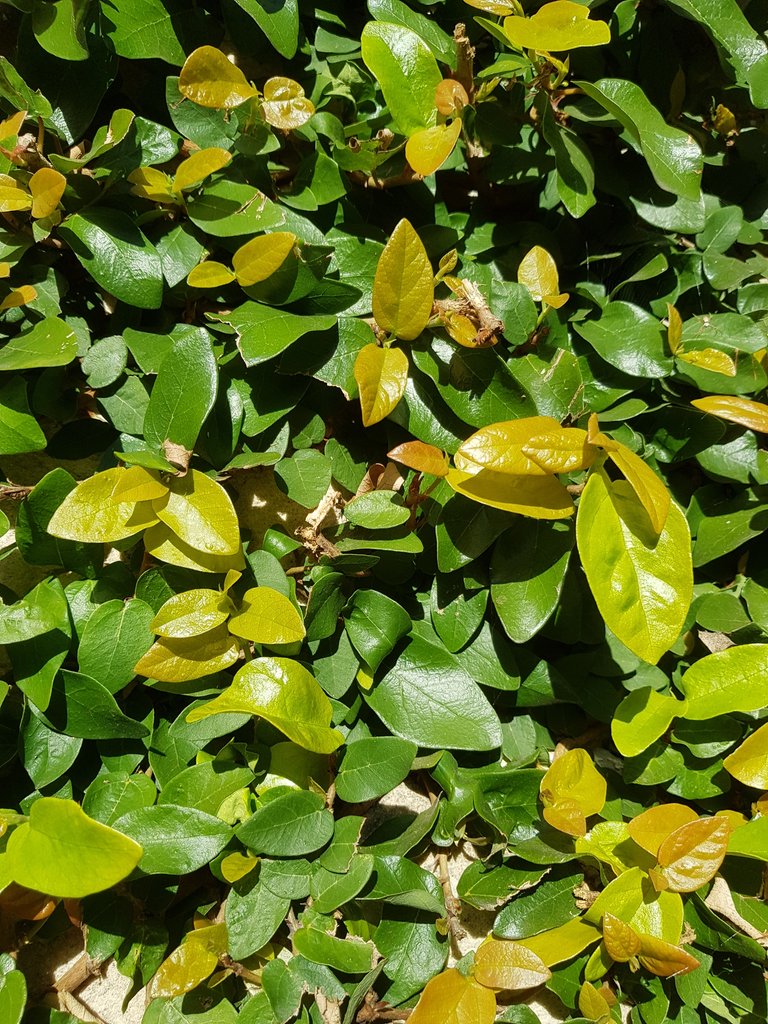 Juvenile foliage
Juvenile foliage 
Ficus clings tight to a stone wall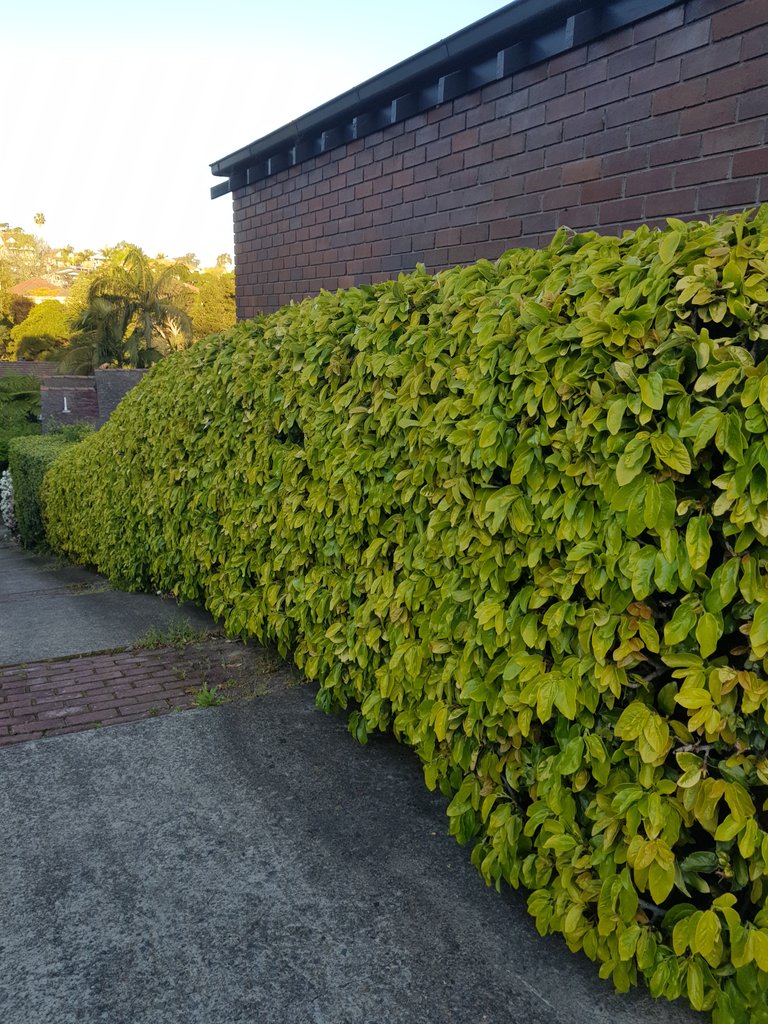
Mature foliage being kept under control as a screen or hedge going down a driveway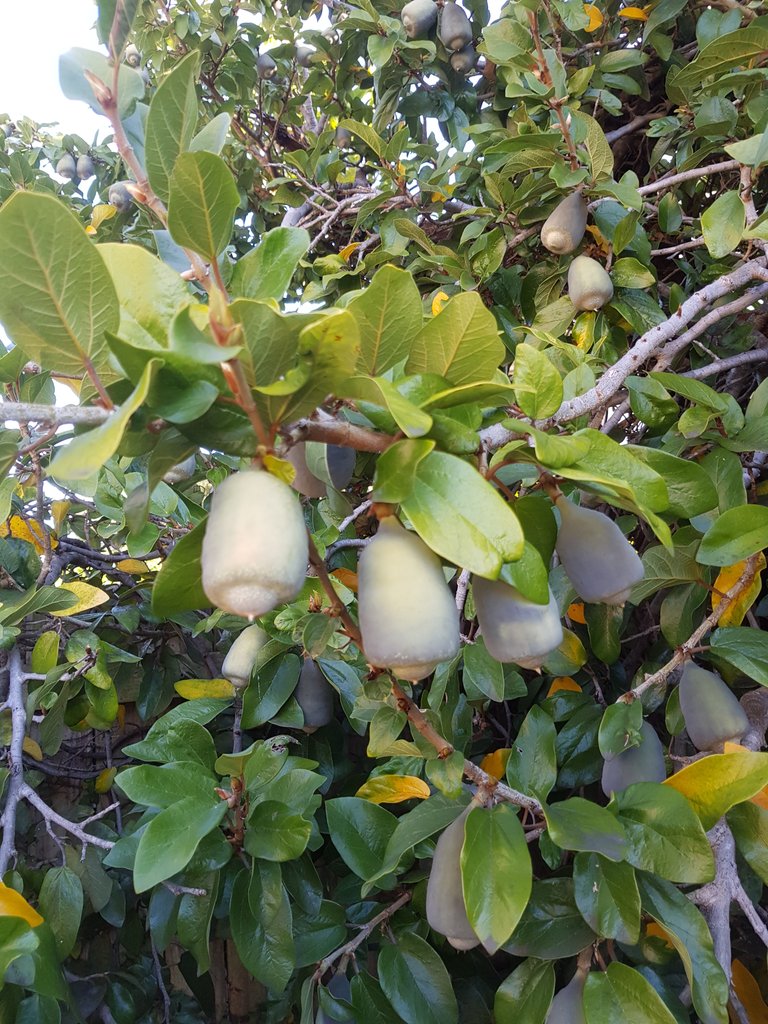
Ugly out-of-control mature growth with fruit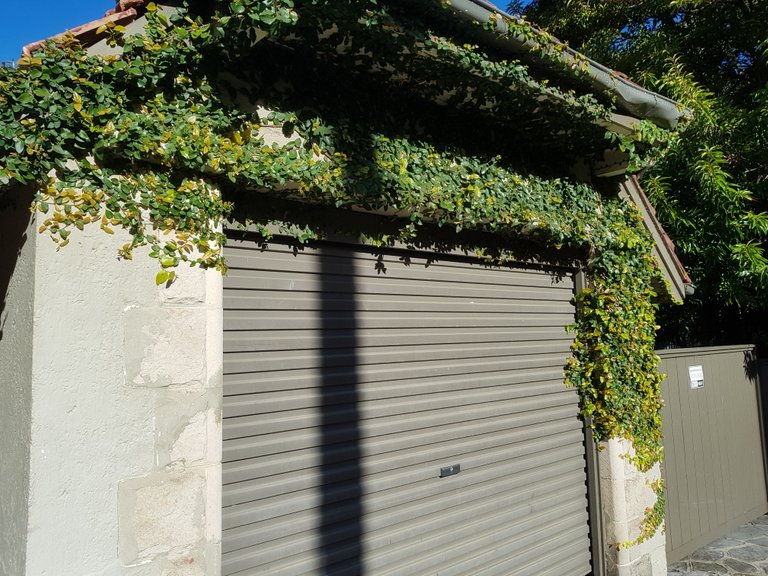
Trained across the entrance to a garage, but starting to get into the gutters, needs a trim !
Creeping dollar plants are most often seen covering fence walls or houses. The Latin name of the creep dollar plant called Ficus Pumila, is a species of flowering plant of the mulberry family. This plant originates from East Asia, most grown in China, Japan and Vietnam. The benefits of dollar propagation for health are numerous, although some issues mention that this plant is dangerous. Creep dollar is used to treat impotence, menstrual disorders, dysuria, dyschezia, rheumatism, lumbago, boils and impetigo.
Today the creep dollar has been cultivated in several regions of the southeast and south of the United States. Pumilus, in Latin means 'dwarf' which refers to the leaves of plants. This plant has long been used as an ingredient in making traditional medicines, especially in the East Asia region. Another name for the creep dollar plant is called Climbing fig, Creeping fig, Fig ivy. And in China it is called P'i-li or Mu-lien (wood lotus).
Ficus Pumila or dollar creep can grow 2.5 to 4 meters. Young leaves appear much smaller and thinner than adult leaves. In its spread, this plant requires Blastophaga pumilae wasps fed Marpesia Petreus butterfly larvae. So that this plant can bear fruit, which is also beneficial for health. Creepage dollars are mostly used as ornamental plants, creeping on the fence walls and houses. Its function to decorate the house is almost the same as tehan tea plant, acalypha siamensis.
The benefits of the creep dollar for health are most effective in treating male complaints compared to women. East Asian traditions have long used this plant to cure several diseases naturally.
Source:
https://www.google.co.id/url?sa=t&source=web&rct=j&url=https://www.jamuin.com/2017/09/20-manfaat-dolar-rambat-ficus-pumila.html%3Fm%3D1&ved=2ahUKEwjxmpya0o_eAhUWUI8KHRxPA2wQFjATegQIBhAB&usg=AOvVaw169R4CNpNStlULhLIBvvas&cshid=1539854415139
Fav. comment Award ! Well done on your choice of Pics.
Shared on twitter promoting good quality content on #Steemit.
#Promo-Steem #steemtalent #JoinSteemit #Steemit
Climb the Walls with Ficus pumila. #STEEM #steemtalent #JoinSteemit #Steemit
#Gardening #GardenersWorld
#Photography #Photographer #Blogging #Blogger
You have some very good ideas here i will keep it in mind
Winter hardy to USDA Zones 9-11. In St. Louis, grow indoors as a houseplant or outdoors as an annual ground cover or container plant. Easily grown in a soil-based potting mix. Site indoors in bright indirect light or part shade with protection from afternoon sun. Water regularly during the growing season. Avoid overwatering. Reduce watering from fall to late winter. Prune as needed.
Ficus pumila, commonly called creeping fig, is a vigorous, fast-growing, evergreen, climbing vine that from a distance simply does not look much like a fig. Where it may be grown outdoors, it will climb and cover walls, posts, trellises and other structures by adhesive aerial rootlets.
http://www.missouribotanicalgarden.org/PlantFinder/PlantFinderDetails.aspx?kempercode=b599
Prefers partial shade but will tolerate full sun; adult and juvenile form; often grown as a houseplant or in a greenhouse; drought tolerant; severe cold will kill the vine back to the ground; good climber; not hardy in most of NC; this plant is resistant to damage by deer and is moderately salt tolerant.
https://plants.ces.ncsu.edu/plants/all/ficus-pumila/
This is a good creeper plant to cool down homes and beautify walls @ctrl-alt-nwo but it has to be trimmed always otherwise it will not look good.
@ctrl-alt-nwo,
Wow this plant can be used with Stone Walls! I think my country, we have a similar kind of plant! But not this one! Probably a good solution for fences and walls!
Cheers~
Thank you for an interesting plant, our ficus is grown in indoor conditions and I didn’t even know that it has fruits. In life form, the plant is classified as a liana: the dwarf ficus has a flexible and rapidly growing stem. Stems thin, green with a brownish tinge, very tenacious. In the subtropical climate, where it can grow in open ground, they grow many meters in length, weaving houses, lampposts and tree trunks.
The plant has a creeping shoot and many small leaves on short stalks. Depending on the variety, the plants of this species can have different colors of leaves: with a white border on the edge of the lamina, spots, etc., which gives them a beautiful and unusual appearance.
Ficus reproduces only by vegetative means. To do this, use the cuttings that remain from pruning ficus (pruned preferably in February-March). Cuttings easily take root in water as well as in a moist substrate. You can get ficus seeds only in the greenhouse or in the open field where the plant can bear fruit.
Source: http://proklumbu.com/komnatnue/fikus/pumila.html
I like braiding plants. They resemble a natural green carpet, which covers everything in its path.
Amazing plant, my friend and Ficus pumila - creeping fig vigorous evergreen climber with heart shaped foliage, suited to planting in shaded locations. Trim regularly to maintain fresh foliage.
USES: An ideal solution to unsightly fences and walls. Works well over archways, planted as topiary and even indoors for a little greenery! Plant in hanging baskets to enjoy the cascading foliage.
PLANTING: Plant in a mostly shaded location with plenty of indirect light. Plant in free draining soil rich in organic matter.
CARE: Mulch and water regularly until plant becomes established. Feed with a controlled release yearly during spring and follow up with liquid fertiliser monthly during Summer. Provide extra water during dry periods. Growth can be prolific, trim side shoots & shape as required. Suited to planting in most areas of Australia excluding the highlands and areas around Hobart.
HEIGHT & WIDTH: up to 6m H x 6m W.
PLEASE NOTE: These plants are tube-stock plants, with the benefit of being a young plant they will establish quickly in your garden. The average size of your plants will be 15 -25 cm in height with a pot size of 42 mm wide and 80 mm high.
Thank you @ctrl-alt-nwo
A source of information: http://www.australianplantsonline.com.au/ficus-pumila-creeping-fig.html
This plant can create a jungle in no time! Too much work for a busy person like me! Rather have something with nice flowers and sweet scent! But this could be useful by the edge of the land to prevent cows from coming inside the unfenced area!
Posted using Partiko iOS
Unlike most figs, which are trees, this East Asian native is a rampant evergreen vine grown primarily for its dense all-enveloping foliage. It has both juvenile and adult growth phases. Juvenile growth has small heart-shaped leaves on slender fuzzy clinging stems. Their rootlike holdfasts bond tightly to most surfaces including metal and concrete, and can damage some materials including wood. Where hardy, creeping fig will quickly cover multi-story buildings, requiring regular pruning to keep it in bounds. Adult growths are thick-stemmed and shrubby with leathery elliptical leaves that are several times larger than juvenile leaves. They often appears once the juvenile form reaches the limits of its support. Relatively large hairy green figs appear on adult branches, maturing to purple. Flowers are inconspicuous.
Creeping fig is a most accommodating plant, growing almost anywhere to form cool green vertical carpets. It prefers well-drained soil and partial to full shade. Full hot sun will yellow its leaves. It will take a few degrees of frost, but not prolonged freezing. Remove the mature fruiting branches to maintain the climbing habit. It is very drought tolerant once established. Use creeping fig to soften concrete walls or to cover embankments, or grow it indoors in a hanging basket or planter. Among its many cultivars are ‘Minima,’ which has tiny leaves; ‘Quercifolia,’ with small lobed oak-like leaves; and ‘Variegata,’ whose leaves have white marks or edges.
Source: http://www.learn2grow.com/plants/ficus-pumila/
Probably got the be careful if it gets invasive as it does not come from your land. Things can get messy, right?
Correct.
interesting natural walls they form looks wonderful for houses :)
Hello Mr. Botanist @ctrl-alt-nwo :)
Ficus pumila (creeping fig or climbing fig) is a species of flowering plant in the mulberry family, native to East Asia (China, Japan, Vietnam) and naturalized in parts of the southeastern and south-central United States. It is also found in cultivation as a houseplant.
Source
Ficus pumila is a woody evergreen vine, growing to 2.5–4 m (8 ft 2 in–13 ft 1 in). The juvenile foliage is much smaller and thinner than mature leaves produced as the plant ages. This plant requires the fig wasp Blastophaga pumilae for pollination, and is fed upon by larvae of the butterfly Marpesia petreus.
Source
As the common name, "creeping fig" indicates, the plant has a creeping/vining habit and is often used in gardens and landscapes where it covers the ground and climbs up trees and walls. It is hardy down to 1 °C (34 °F) and does not tolerate frost.
Source
Therefore in temperate regions is often seen as a houseplant. It is fast-growing and requires little in the way of care. It has gained the Royal Horticultural Society's Award of Garden Merit.
Source
Source of Information : 1, 2
Plant Care Guide for the Ficus Pumila (Creeping Fig)
The ficus pumila is a plant more commonly called creeping fig. It’s earned this latter moniker because it’s a climbing, vine-like plant whose suction-like properties enable it to cling to a wall and grow upward. Able to thrive in hardiness zones 8 and above, this plant does need some wire support to properly train it to climb in the manner you’d like. It can cover the average wall in about two to three years, depending on the fertility of the soil. While its juvenile leaves are bright green, mature leaves tend to be darker and protrude from vertical branches. Because of this, routine pruning is a must to keep the plant looking its vibrant best.

Cool Name, Cooler Plant
Ficus pumila is the name that science has given this wall-climbing member of the ficus family. However, its common name, creeping fig, is not only way cooler, it’s one of the coolest common monikers in the plant kingdom. It’s also one of the coolest plants you can grow at home.

The evergreen plant is marked by delicate, heart-shaped leaves that grow roughly two to four inches long. They can produce small fig fruits along the way, but they’re rarely visible and never edible. They’re planted in the ground and almost exclusively against a wall or flat surface, where its suction cup-like vines will quickly cling to and cover as it matures.
The creeping fig is an excellent choice for any gardener that has an eyesore of a wall, fence, or structure that’s in need of concealing. It conducts its coverage rather efficiently – if you’re tending to its needs, it will cover your average wall within two to three years. It’s also fun to watch it proliferate on the structure during this time
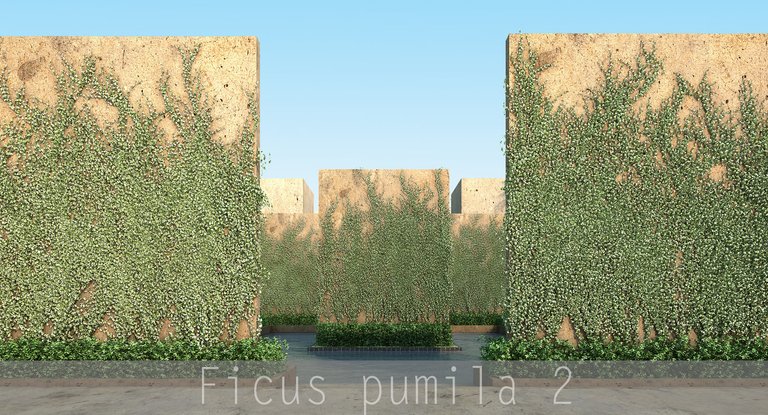
https://www.sproutabl.com/ficus-pumila-creeping-fig/
we´ve a similar climbing plant in germany.
Thats about 15 floors high.
Like a living wall or fence when done right. :-)
Congratulations @ctrl-alt-nwo!
Your post was mentioned in the Steemit Hit Parade in the following category:
Thankyou !
Creeping fig is an enthusiastic climber able to scramble up vertical surfaces 3 and 4 stories tall with the aid of a powerful adhesive. This vine coats surfaces with a tracery of fine stems that are densely covered with small heart shaped leaves that are 1 inch long by about .75 in (2 cm) wide, they are held closely to the surface creating a mat of foliage that extends barely 1 in (2.5 cm) from the surface. These are the juvenile leaves.
Once the vine has reach the top of its support if will begin to form horizontal branches on which adult foliage is borne. Adult leaves are held alternately in two rows along these branches. They are more leathery than the juveniles, and are dark green, and about 3 in (7.6 cm) long by 2 in (5 cm) wide. The fruit is a fig. These are borne only on the horizontal stems, they are pale green in color and about 3 in (7.6 cm) long by 2.5 in (6.4 cm) wide.
Usage
Create cool green curtains of dense foliage on unattractive block, masonry, and concrete walls. The city of Orlando, Florida uses this vine to soften concrete freeway supports which helps to dampen traffic noise as well as provide visual relief. Disney and the other theme parks make use of creeping fig to create "instant" topiary. Wire frameworks are created of geometric shapes, animals, and even famous cartoon characters. The frames are lined with sphagnum moss and filled with growing medium. Creeping fig is planted in the frame which rapidly grows to cover the shape in a thin coat of fine-textured juvenile leaves. This vine also makes a good ground cover for large plantings where it looks great scrambling over boulders and tree trunks.
Features
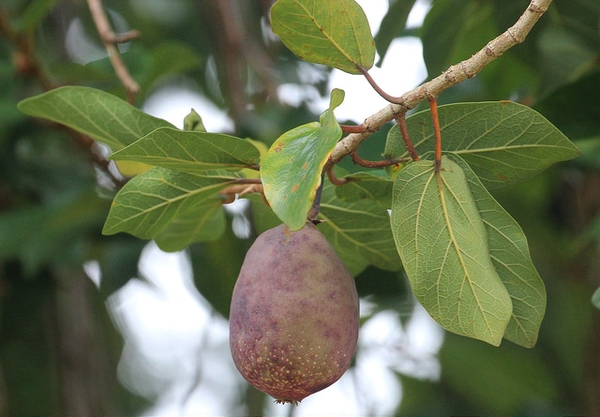
This is one of the best vines for creating dense green coverings due to it's fine attractive foliage, shade tolerance and fast growth rate.
References12345
Ficus pumila (creeping fig or climbing fig) is a species of flowering plant in the mulberry family, native to East Asia (China, Japan, Vietnam) and naturalized in parts of the southeastern and south-central United States. It is also found in cultivation as a houseplant. The etymology of the species name corresponds to the Latin word pumilus meaning dwarf, and refers to the very small leaves of the plant.
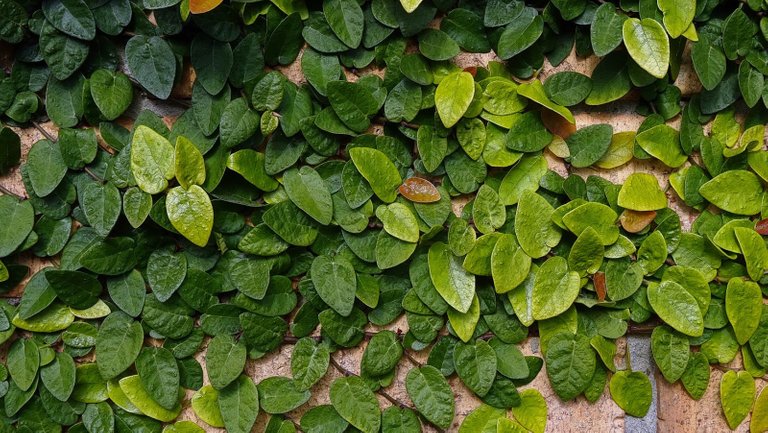
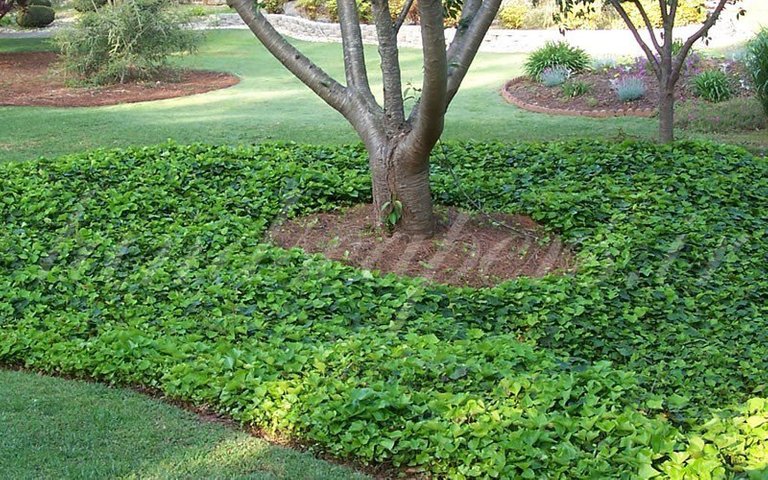.jpg)
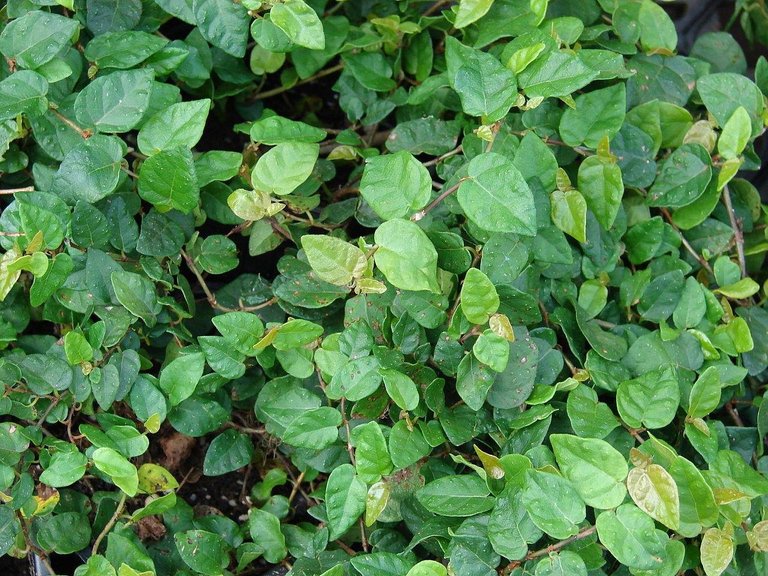
Source
Source
Source
Ficus pumila is a woody evergreen vine, growing to 2.5–4 m (8 ft 2 in–13 ft 1 in). The juvenile foliage is much smaller and thinner than mature leaves produced as the plant ages. This plant requires the fig wasp Blastophaga pumilae for pollination, and is fed upon by larvae of the butterfly Marpesia petreus.
Source
magoo-2 found a series of multi accounts of a same owner is following your articles to cheat your generous rewards.
magoo-2 found these accounts are suspicious & can be multi accounts of a single owner. Conclusion is based on last 30 days transactions:
@alves
@devid1996
@mhyeasin
@sadikulaziz
@msena
@kilee
@ripon1
@googlefighter
@melianasagita
@ashasikder
@hichako
magoo-2
Check our latest multi comment spam update report
The ficus pumila is a plant more commonly called creeping fig. It’s earned this latter moniker because it’s a climbing, vine-like plant whose suction-like properties enable it to cling to a wall and grow upward. Able to thrive in hardiness zones 8 and above, this plant does need some wire support to properly train it to climb in the manner you’d like. It can cover the average wall in about two to three years, depending on the fertility of the soil
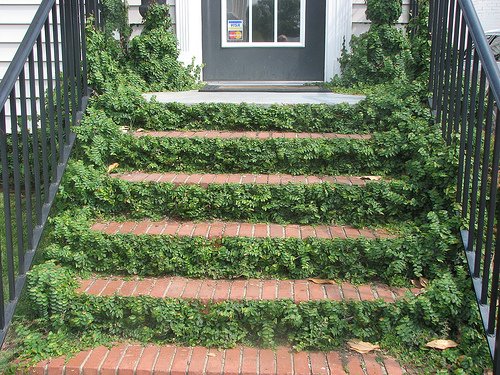
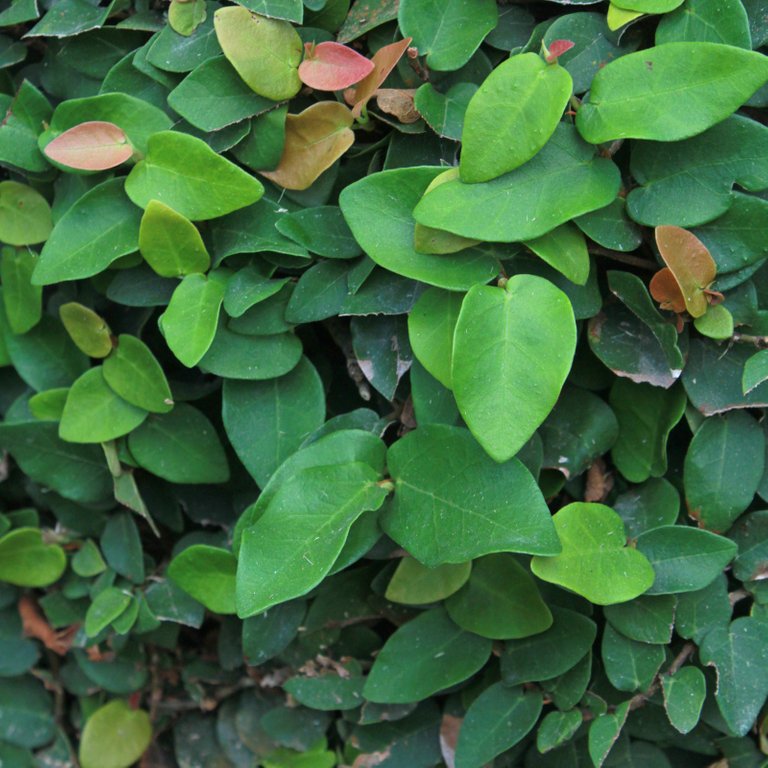
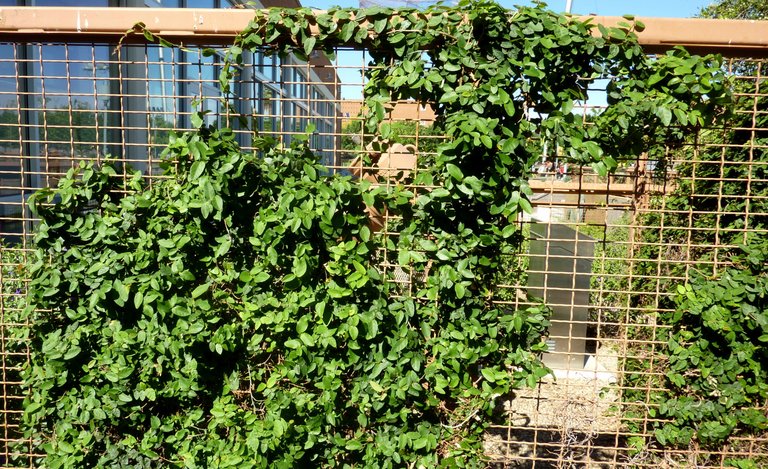
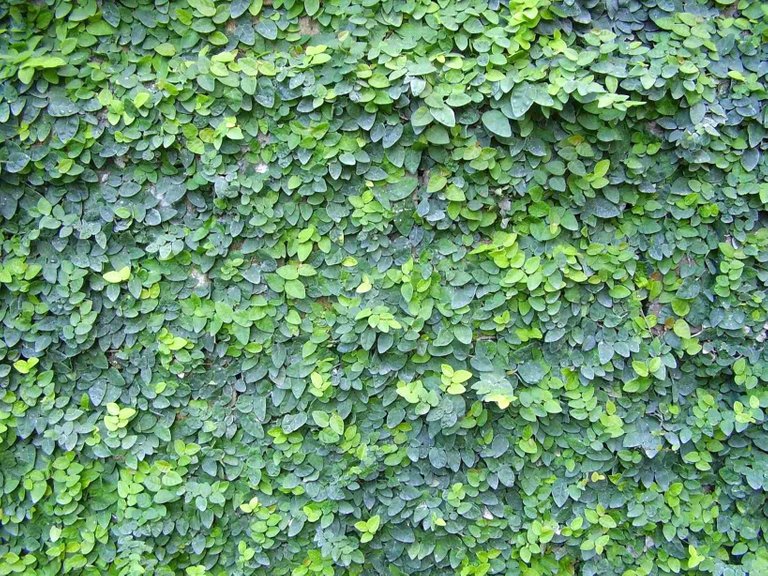
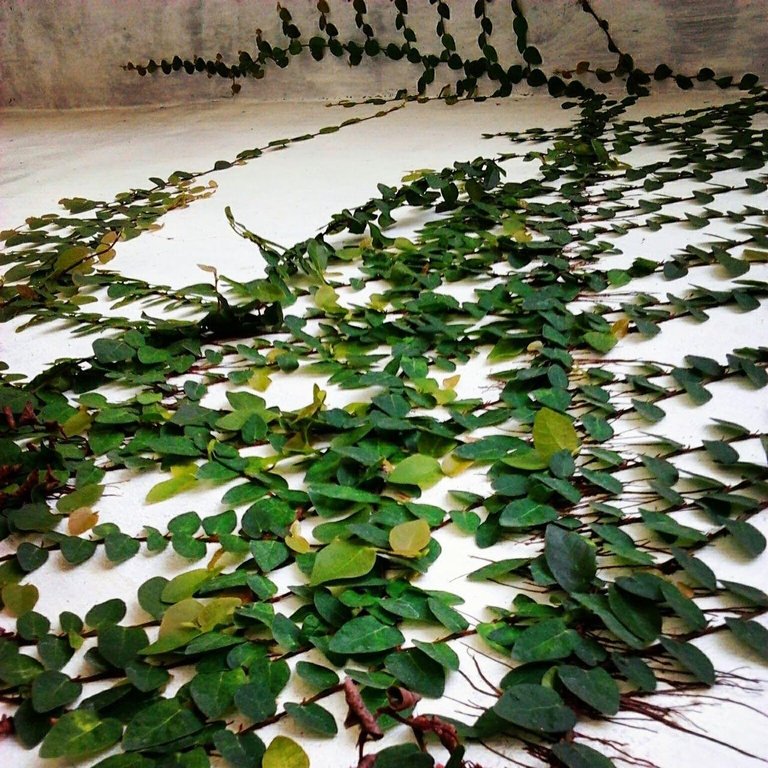
While its juvenile leaves are bright green, mature leaves tend to be darker and protrude from vertical branches. Because of this, routine pruning is a must to keep the plant looking its vibrant best.
The evergreen plant is marked by delicate, heart-shaped leaves that grow roughly two to four inches long. They can produce small fig fruits along the way, but they’re rarely visible and never edible. They’re planted in the ground and almost exclusively against a wall or flat surface, where its suction cup-like vines will quickly cling to and cover as it matures.
The creeping fig is an excellent choice for any gardener that has an eyesore of a wall, fence, or structure that’s in need of concealing. It conducts its coverage rather efficiently – if you’re tending to its needs, it will cover your average wall within two to three years. It’s also fun to watch it proliferate on the structure during this time.
Source.
yes....it has also alot here in philippines that kind of vine sir, mostly uses that kind of vines here are rich people..they use it for there fences..
Good day . We grow mainly ficus at home, in pots. The dwarf (Ficus pumila) is a perennial herbaceous ground cover plant that belongs to the Mulberry family. It has woody thin stems on which a lot of air roots are formed. With their help, a strongly branching plant clings to tree trunks, sprouting right in the bark, or spreading thick carpet along the ground. Growing very quickly, the plant is able to fully cover an area of about four square meters in a short period of time.The most popular varieties of dwarf ficus, which flower growers prefer to grow indoors, are Sunny (with a creamy white border at the edges of the leaves), White Sunny (with a solid white border at the edges of the foliage) and Dort (with small creamy white spots on the leaf surface). These tiny types of herbaceous plants can be grown in hanging pots, on a windowsill, and even in the form of vertical columns.
https://flowertimes.ru/fikus-mikrokarpa/
Ficus pumila
(creeping fig)
Description
Top of page
The juvenile phase of this plant is morphologically different from the adult phase. Juvenile plant attaining several metres in length, much branched, climbing by means of adventitious roots; stems flattened; leaves 1.5-2.5 cm long, ovate to oblong, retuse at the apex, very closely spaced. Adult plant developing into a much branched liana, with adventitious roots, attaining 10 m in length; produces abundant white latex when wounded. Stems flattened, striate, tomentose, glabrescent when mature, with short pendulous branches. Leaves alternate, simple, 4-7 × 2.2-4 cm, oblong, oblanceolate, ovate, or elliptical, the apex obtuse, the base subcordiform, the margins entire; upper surface dark green, slightly shiny, with the venation notably lighter; lower surface light green, dull, with prominent reticulate venation; petioles 1.3-1.6 cm long, flattened on the upper surface, pubescent, light brown; stipules oblong-lanceolate to subulate, persistent, 1-1.2 cm long, brown, sericeous. Syconium green, pyriform, up to 6 cm long, soft (Acevedo-Rodriguez, 2005).
The species will form woody stems after several years of growth.
Distribution
Top of page
F. pumila is native to temperate and tropical Asia. It is a commonly cultivated species across Puerto Rico and is found in the El Yunque and Maricao public forests (Acevedo-Rodriguez, 2005). It is also widely cultivated in the Philippines and Melanesia (Madulid, 1995), as well as in Nepal and Indo-China (Nepal Checklist, 2014). In the USA, the species can be cultivated in parts of the southern and western coasts (Gilman, 1999).
https://www.cabi.org/isc/datasheet/24162
Ficus pumila (Creeping Fig) - An evergreen vine that can attach itself to almost any kind of material for a seemingly endless distance. Juvenile dainty heart-shaped leaves develop into 2 to 4 inch long leathery leaves with age and after vertical growth has reached its limit. The small fig fruits are rarely seen and not edible. Best planted in cool full sun to light shade, though does not fare as well on hot south or west facing walls. Only requires occasional irrigation once established. It is hardy to about 20 degrees F. A durable vine that will adhere and solidly cover walls and other structures, thought can become someone of a nuisance as it outgrows an allotted space. It will grow close to the ocean if given some protection behind buildings or other plantings. Creeping Fig is native to Japan's southern islands, eastern China, and Vietnam. The genus name Ficus comes from the ancient Latin name for figs and their edible fruit and the specific epithet comes from the Latin for dwarf or low-growing. This plant is also commonly called Ficus repens in the nursery trade. This description is based on our research and observations made of this plant as it grows in our nursery, in the nursery garden and in other gardens that we have visited. We will also incorporate comments received from others and always appreciate getting feedback of any kind from those who have some additional information about this plant, in particular if this information is contrary to what we have written or if they have additional cultural tips that would aid others in growing Ficus pumila.
source= https://www.smgrowers.com/products/plants/plantdisplay.asp?plant_id=649
@ctrl-alt-nwo, It's an learning aspect to know about Ficus pumila and in my opinion in some cases of plants we can see both the needed side and unneeded side and as you said in this case this plant can become messy. And one thing is great to hear and that is Growth aspect and that is because fast growing plants are always an great to view for sure. And beauty of this plant can be seen in these pictures and specially in that Step Side picture where these plants are completely covered or tightly hugged the Steps Boundaries. Thank you so much for sharing this plant with us and for sure it was knowledgeable session.
Wishing you an great day and stay blessed. 🙂
Ficus can be evergreen or deciduous trees, shrubs or climbers, with often leathery, simple, entire or lobed leaves and tiny flowers borne within a hollow receptacle which enlarges to form the fruit.


image source
image source
F. pumila is an evergreen self-clinging climber or trailer to 3m, with rich green, ovate leaves 2-5cm in length on climbing shoots, larger and narrower on non-climbing shoots; purple fruits to 5cm in length.
content source
Creeping Fig
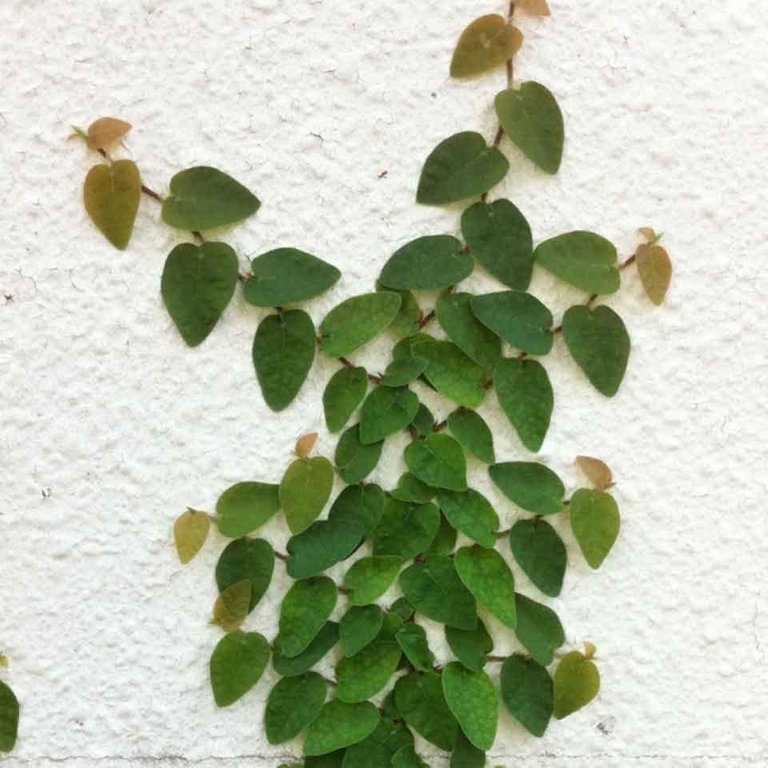
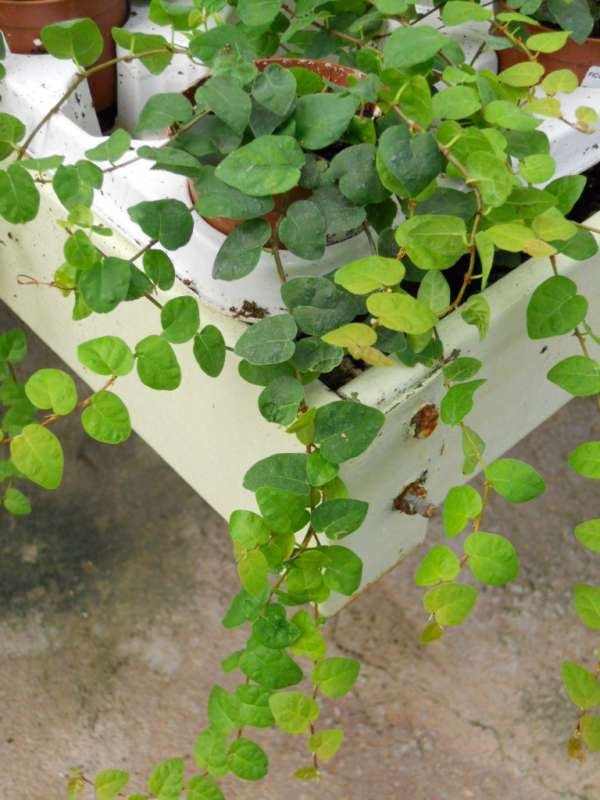
Ficus pumila
Plant Description
An easy-care solution for covering unsightly fences. Vigorous growing, dense branches cling firmly to any surface. A handsome choice for climbing walls, pillars, arbors and fences. Small, leathery, dark green leaves mature into large, thick leaves; prune the mature foliage to promote new juvenile growth. Evergreen.
https://www.monrovia.com/plant-catalog/plants/1261/creeping-fig/
The creeping fig is an evergreen climbing species which you might have seen crawling up the walls of large mansions or a quaint house in the country. Indoors they’re best grown in a hanging basket, or given something to attach to and climb.
There are a number of varieties of this fast growing species such as the miminma, variegata and others which have smaller variegated leaves than the all green pumila.
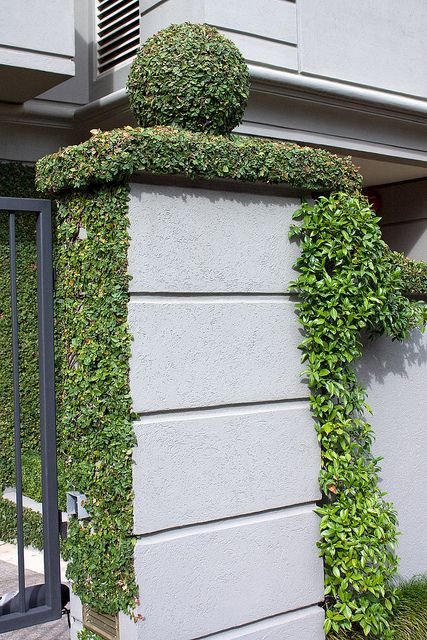


How it looks and displaying: The heart shaped leaves on the ficus pumila grow to approximatively 1 inch long and along a wiry wooden like stem. You can keep these very small in a normal sized plant pot, in a hanging basket, or a larger container where the stems and leaves can hang over the sides. If you would like to be more creative you can allow them to climb a moss stick or provide them with a home made structure they can climb.
Care level: The F. pumila is very easy to grow and maintain (if anything it's hard to stop them growing), but it does need to be pruned to keep it at a size suitable for the place it resides indoors. The good news you can prune these as much as you like, which is best done in spring.
https://www.houseplantsexpert.com/growing-a-creeping-fig-indoors.html
Green Up a Wall with Creeping Fig
Everyone knows you can grow climbing plants – Boston ivy, Virginia creeper, climbing hydrangea, etc. – on outdoor walls. After all, the term “ivy league university” comes from the way Boston Ivy covers so many of the buildings on university campuses. But have you ever considered letting climbers cover your indoor walls as well?
Ficus Pumila – Care and Cultivation
Ficus pumila is drought tolerant, frost tolerant and even copes with coastal conditions.
Grown as a ‘covering plant’ it will cope with a range of soil types, however is more vigorous in a humus rich well drained soil with some moisture.
Creeping dollar plants are most often seen covering fence walls or houses. The Latin name of the creep dollar plant called Ficus Pumila, is a species of flowering plant of the mulberry family. This plant originates from East Asia, most grown in China, Japan and Vietnam. The benefits of dollar propagation for health are numerous, although some issues mention that this plant is dangerous. Creep dollar is used to treat impotence, menstrual disorders, dysuria, dyschezia, rheumatism, lumbago, boils and impetigo.
How it looks and displaying: The heart shaped leaves on the ficus pumila grow to approximatively 1 inch long and along a wiry wooden like stem. You can keep these very small in a normal sized plant pot, in a hanging basket, or a larger container where the stems and leaves can hang over the sides. If you would like to be more creative you can allow them to climb a moss stick or provide them with a home made structure they can climb.
Care level: The F. pumila is very easy to grow and maintain (if anything it's hard to stop them growing), but it does need to be pruned to keep it at a size suitable for the place it resides indoors. The good news you can prune these as much as you like, which is best done in spring.
Source
The creeping fig is also known as the climbing fig which is primarily grown outdoors as a climbing vine. However, the ficus pumila is also grown as an ornamental house plant, successfully indoors.
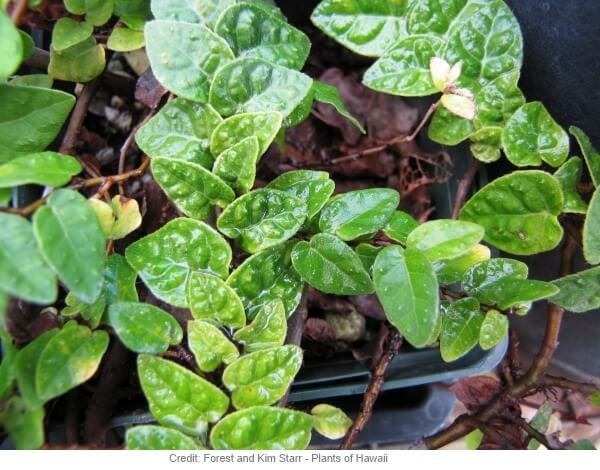
The creeping fig is an evergreen climbing species which you might have seen crawling up the walls of large mansions or a quaint house in the country. Indoors they’re best grown in a hanging basket, or given something to attach to and climb.
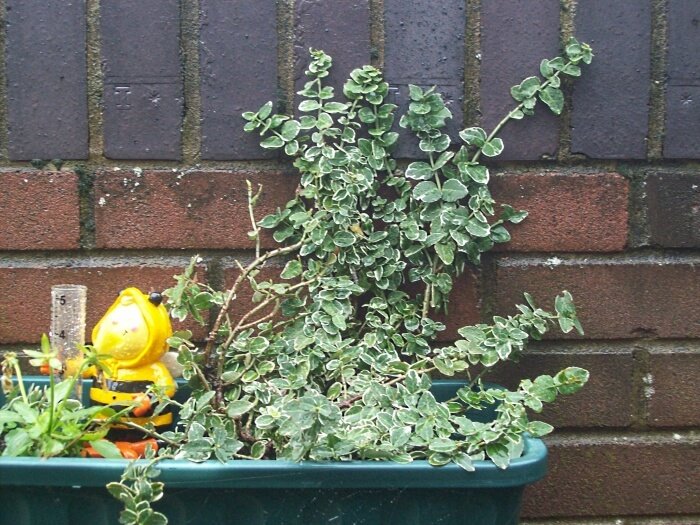
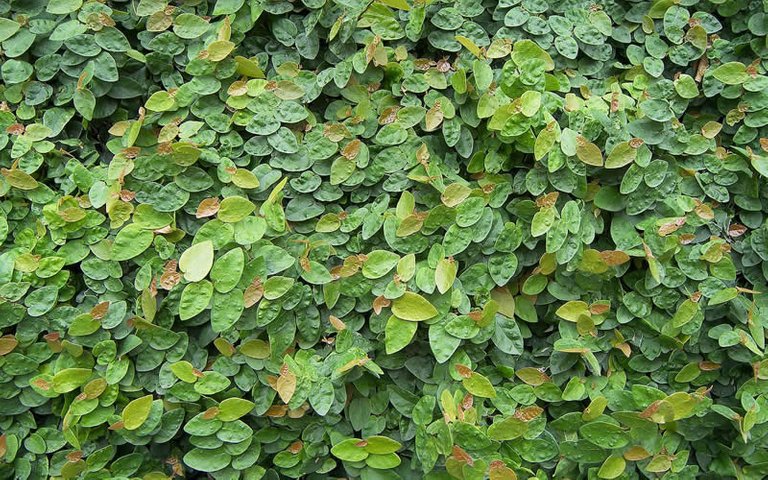
How it looks and displaying: The heart shaped leaves on the ficus pumila grow to approximatively 1 inch long and along a wiry wooden like stem. You can keep these very small in a normal sized plant pot, in a hanging basket, or a larger container where the stems and leaves can hang over the sides. If you would like to be more creative you can allow them to climb a moss stick or provide them with a home made structure they can climb.
Care level: The F. pumila is very easy to grow and maintain (if anything it's hard to stop them growing), but it does need to be pruned to keep it at a size suitable for the place it resides indoors. The good news you can prune these as much as you like, which is best done in spring.
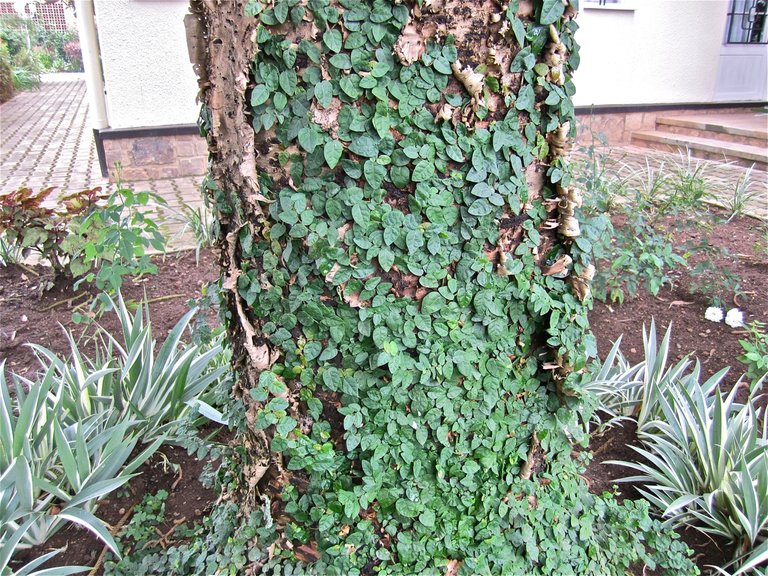
Temperature: The pumila is a tough plant and grows well in temperatures from 55 - 75°F (13 - 24°C (can be higher or lower and survive).
Light: Avoid direct sunlight and provide a brightly lit setting. It will also tolerate low lighting conditions.
Soil: Most well draining and aerated potting soil mixes will suffice.
Content Source
An easy-care solution for covering unsightly fences. Vigorous growing, dense branches cling firmly to any surface. A handsome choice for climbing walls, pillars, arbors and fences. Small, leathery, dark green leaves mature into large, thick leaves; prune the mature foliage to promote new juvenile growth. Evergreen.
source
magoo-2 found a series of multi accounts of a same owner is following your articles to cheat your generous rewards.
magoo-2 found these accounts are suspicious & can be multi accounts of a single owner. Conclusion is based on last 1 year transactions:
@kheightces
@thytheso
@mabir
@ristotle
@tanuesh
@alizamanjutt454
@eastmund
@vijayar
@lycusa
@snorio
@alexeyy
@surenda
@isuru1127
magoo-2
Check our latest multi comment spam update report
This is a leaves plant . Good variety of green colors in the leaves . Walls are looking awesome. Good plant for planting .
Green Up a Wall with Creeping Fig
Everyone knows you can grow climbing plants – Boston ivy, Virginia creeper, climbing hydrangea, etc. – on outdoor walls. After all, the term “ivy league university” comes from the way Boston Ivy covers so many of the buildings on university campuses. But have you ever considered letting climbers cover your indoor walls as well?
Ficus Pumila – Care and Cultivation
Ficus pumila is drought tolerant, frost tolerant and even copes with coastal conditions.
Grown as a ‘covering plant’ it will cope with a range of soil types, however is more vigorous in a humus rich well drained soil with some moisture.
Creeping dollar plants are most often seen covering fence walls or houses. The Latin name of the creep dollar plant called Ficus Pumila, is a species of flowering plant of the mulberry family. This plant originates from East Asia, most grown in China, Japan and Vietnam. The benefits of dollar propagation for health are numerous, although some issues mention that this plant is dangerous. Creep dollar is used to treat impotence, menstrual disorders, dysuria, dyschezia, rheumatism, lumbago, boils and impetigo.
How it looks and displaying: The heart shaped leaves on the ficus pumila grow to approximatively 1 inch long and along a wiry wooden like stem. You can keep these very small in a normal sized plant pot, in a hanging basket, or a larger container where the stems and leaves can hang over the sides. If you would like to be more creative you can allow them to climb a moss stick or provide them with a home made structure they can climb.
Care level: The F. pumila is very easy to grow and maintain (if anything it's hard to stop them growing), but it does need to be pruned to keep it at a size suitable for the place it resides indoors. The good news you can prune these as much as you like, which is best done in spring.
Source
magoo-2 found a series of multi accounts of a same owner is following your articles to cheat your generous rewards.
magoo-2 found these accounts are suspicious & can be multi accounts of a single owner. Conclusion is based on last 1 year transactions:
@faizazohaib
@faraz33
@zohaib336
magoo-2
Check our latest multi comment spam update report
The creeping fig is an evergreen climbing species which you might have seen crawling up the walls of large mansions or a quaint house in the country. Indoors they’re best grown in a hanging basket, or given something to attach to and climb.
There are a number of varieties of this fast growing species such as the miminma, variegata and others which have smaller variegated leaves than the all green pumila.
How it looks and displaying: The heart shaped leaves on the ficus pumila grow to approximatively 1 inch long and along a wiry wooden like stem. You can keep these very small in a normal sized plant pot, in a hanging basket, or a larger container where the stems and leaves can hang over the sides. If you would like to be more creative you can allow them to climb a moss stick or provide them with a home made structure they can climb.
source
magoo-2 found a series of multi accounts of a same owner is following your articles to cheat your generous rewards.
magoo-2 found these accounts are suspicious & can be multi accounts of a single owner. Conclusion is based on last 1 year transactions:
@kheightces
@thytheso
@mabir
@ristotle
@tanuesh
@alizamanjutt454
@eastmund
@vijayar
@lycusa
@snorio
@alexeyy
@surenda
@isuru1127
magoo-2
Check our latest multi comment spam update report
Don't cut back on your social engagements to make time to care for your creeping fig (Ficus pumila). This is one tough plant, strong and aggressive -- it's such a good climber that it seems more akin to an octopus than a fig tree (Ficus spp.). The vine covers any surface, from a cement wall to a tree, with its bright, heart-shaped leaves. As enthusiastic as it is beautiful, creeping fig easily clamors 4 feet up a cement wall without the slightest support, thanks to its adhesive rootlets. It requires little TLC in your garden aside from pruning.
source
magoo-2 found a series of multi accounts of a same owner is following your articles to cheat your generous rewards.
magoo-2 found these accounts are suspicious & can be multi accounts of a single owner. Conclusion is based on last 30 days transactions:
@itamarr
@chocosteem
@berwyn
@benedetto
@bronter
@hungduan
magoo-2
Check our latest multi comment spam update report
Ficus Tree Care: Tips For Growing Ficus Indoors
Ficus trees are a common plant in the home and office, mainly because they look like a typical tree with a single trunk and a spreading canopy. But for all of their popularity, ficus plants are finicky. However, if you know how to care for a ficus tree, you’ll be better equipped with keeping it healthy and happy in your home for years.
Learn About Ficus Houseplants
What is commonly referred to as a ficus is technically a weeping fig. It’s a member of the Ficus genus of plants, which also includes rubber trees and fig fruit trees, but when it comes to houseplants, most people refer to a weeping fig (Ficus benjamina) as simply a ficus.
Ficus trees can maintain their tree-like shape regardless of their size, so this makes them ideal for bonsais or for massive houseplants in large spaces. Their leaves can be either dark green or variegated. In recent years, some imaginative nurseries have started to take advantage of their pliable trunks to braid or twist the plants into different forms.
Growing Ficus Indoors
Most ficus trees enjoy bright indirect or filtered light with variegated varieties happily able to take medium light. Bright, direct light may result in scalding of the leaves and leaf loss. Ficus trees also cannot tolerate low temperatures or drafts. They need to be kept in temperatures above 60 F. (16 C.) and actually prefer temperatures above 70 F. (21 C.). Cold drafts from windows or doors will harm them, so make sure to place them somewhere where drafts will not be an issue.
How to Care for a Ficus Tree When growing ficus indoors, it’s important to maintain a relatively high humidity around the plant. Regular misting or setting the ficus tree on a pebble tray filled with water is a great way to increase their humidity, but keep in mind that while they like high humidity, they don’t like overly wet roots. Therefore, when watering, always check the top of the soil first. If the top of the soil is wet, don’t water as this means they have enough moisture. If the top of the soil feels dry to the touch, this indicates that they need water.
Common Problems When Caring for a Ficus Plant Almost everyone who has owned a ficus tree has asked themselves at some point, “Why is my ficus tree dropping its leaves?” A ficus tree losing its leaves is the most common problem these plants have. Leaf drop is a ficus tree’s standard reaction to stress, whether it’s from any of the following: Under watering or over watering Low humidity Too little light Relocation or repotting Drafts Change in temperature (too hot or cold) Pests
https://www.gardeningknowhow.com/houseplants/ficus/ficus-tree-care.htm
magoo-2 found a series of multi accounts of a same owner is following your articles to cheat your generous rewards.
magoo-2 found these accounts are suspicious & can be multi accounts of a single owner. Conclusion is based on last 1 year transactions:
@sony1992
@melissa1999
@max1994
@tania12
@lararose
magoo-2
Check our latest multi comment spam update report
Ficus pumila L.
Family Name : Moraceae
Synonyms : Ficus stipulata, Ficus longipedicellata Common Names : Creeping Fig, Climbing Fig, Creeping Ficus, Creeping Rubberplant, Ara JalarPlant Morphology :
Growth Form: Woody vine up to 4 m long with a climbing growth habit or trailing in the absence of vertical support.
Foliage: Egg-shaped leaves are 2-5 cm long on climbing vines,
Fruits: Purple, pear-shaped figs grow up to 5 cm long.
Cultivation :
Prune regularly to encourage new growth with smaller leaves, and discourage mature woody, shrub-like growth.
Ethnobotanical Uses :
Edible Plant Parts (Edible Fruits)
Edible Plant Parts (Edible Fruits), Medicinal (Stems and leaves used in Traditional Chinese Medicine as tonic and to treat fever. Leaves used in Japan in beverages to treat diabetes and high blood pressure. A decoction of fruits, stems and leaves are used to treat joint pain due to arthritis, rheumatism and sprains. Fruits said to promote lactation for mothers and cure impotency. Roots used to treat bladder problems and induce urination.)
https://florafaunaweb.nparks.gov.sg/special-pages/plant-detail.aspx?id=1403
magoo-2 found a series of multi accounts of a same owner is following your articles to cheat your generous rewards.
magoo-2 found these accounts are suspicious & can be multi accounts of a single owner. Conclusion is based on last 30 days transactions:
@rik432
@ratul8940
@rahul72
@villani
@Wilson
@masud90
@purepinag
@sumonsha
@taylor10
magoo-2
Check our latest multi comment spam update report
Ficus pumila
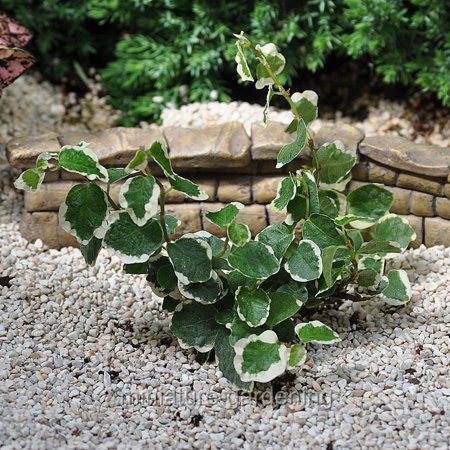
Ficus pumila (creeping fig or climbing fig) is a species of flowering plant in the mulberry family, native to East Asia (China, Japan, Vietnam)[2] and naturalized in parts of the southeastern and south-central United States.[3][4] It is also found in cultivation as a houseplant. The etymology of the species name corresponds to the Latin word pumilus meaning dwarf,[5] and refers to the very small leaves of the plant.
Ficus pumila is a woody evergreen vine, growing to 2.5–4 m (8 ft 2 in–13 ft 1 in). The juvenile foliage is much smaller and thinner than mature leaves produced as the plant ages. This plant requires the fig wasp Blastophaga pumilae for pollination, and is fed upon by larvae of the butterfly Marpesia petreus.
Cultivation
As the common name, "creeping fig" indicates, the plant has a creeping/vining habit and is often used in gardens and landscapes where it covers the ground and climbs up trees and walls. It is hardy down to 1 °C (34 °F) and does not tolerate frost. Therefore in temperate regions is often seen as a houseplant. It is fast-growing and requires little in the way of care. It has gained the Royal Horticultural Society's Award of Garden Merit.[6][7]
It can become invasive and cover structures and landscape features if not maintained and its growth contained. When climbing buildings or wooden structures, the woody tendrils can cling or root in, and damage structures and/or their surface finishes.[citation needed]
Varieties and cultivars
Ficus pumila var. awkeotsang — awkeotsang creeping fig
Ficus pumila var. quercifolia — oak leaf creeping fig
Ficus pumila 'Curly' — curly creeping fig; crinkled leaf form
Ficus pumila 'Variegata' and Ficus pumila 'Snowflake' — variegated creeping fig; variegated foliage
Cuisine
The fruit of Ficus pumila var. awkeotsang is used in cuisine. In Taiwan, its fruit is turned inside out and dried. The seeds are scraped off and a gel is extracted from their surface with water and allowed to set and form a jelly known in Taiwan as aiyu jelly (or aiyuzi 愛玉子) and in Singapore as ice jelly (文頭雪).
https://en.wikipedia.org/wiki/Ficus_pumila
magoo-2 found a series of multi accounts of a same owner is following your articles to cheat your generous rewards.
magoo-2 found these accounts are suspicious & can be multi accounts of a single owner. Conclusion is based on last 30 days transactions:
@dtube2
@masud1234
magoo-2
Check our latest multi comment spam update report
Ficus pumila
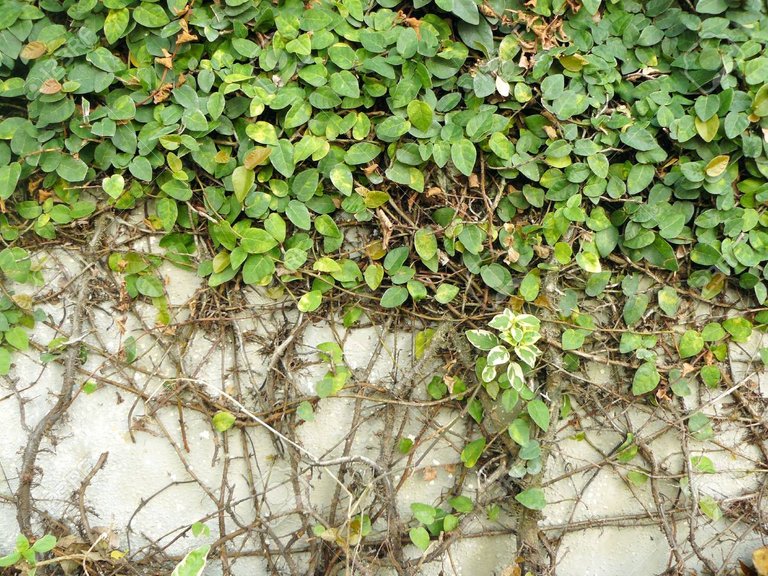
Habit and Cultural Information
Category: Vine
Family: Moraceae (Mulberrys)
Origin: China (Asia)
Ficus pumila (Creeping Fig) - An evergreen vine that can attach itself to almost any kind of material for a seemingly endless distance. Juvenile dainty heart-shaped leaves develop into 2 to 4 inch long leathery leaves with age and after vertical growth has reached its limit. The small fig fruits are rarely seen and not edible. Best planted in cool full sun to light shade, though does not fare as well on hot south or west facing walls. Only requires occasional irrigation once established. It is hardy to about 20 degrees F. A durable vine that will adhere and solidly cover walls and other structures, thought can become someone of a nuisance as it outgrows an allotted space. It will grow close to the ocean if given some protection behind buildings or other plantings. Creeping Fig is native to Japan's southern islands, eastern China, and Vietnam. The genus name Ficus comes from the ancient Latin name for figs and their edible fruit and the specific epithet comes from the Latin for dwarf or low-growing. This plant is also commonly called Ficus repens in the nursery trade. This description is based on our research and observations made of this plant as it grows in our nursery, in the nursery garden and in other gardens that we have visited. We will also incorporate comments received from others and always appreciate getting feedback of any kind from those who have some additional information about this plant, in particular if this information is contrary to what we have written or if they have additional cultural tips that would aid others in growing Ficus pumila.
https://www.smgrowers.com/products/plants/plantdisplay.asp?plant_id=649
magoo-2 found a series of multi accounts of a same owner is following your articles to cheat your generous rewards.
magoo-2 found these accounts are suspicious & can be multi accounts of a single owner. Conclusion is based on last 30 days transactions:
@rik432
@ratul8940
@rahul72
@villani
@Wilson
@masud90
@purepinag
@sumonsha
@taylor10
magoo-2
Check our latest multi comment spam update report
Green Up a Wall with Creeping Fig
Everyone knows you can grow climbing plants – Boston ivy, Virginia creeper, climbing hydrangea, etc. – on outdoor walls. After all, the term “ivy league university” comes from the way Boston Ivy covers so many of the buildings on university campuses. But have you ever considered letting climbers cover your indoor walls as well?
Ficus Pumila – Care and Cultivation
Ficus pumila is drought tolerant, frost tolerant and even copes with coastal conditions.
Grown as a ‘covering plant’ it will cope with a range of soil types, however is more vigorous in a humus rich well drained soil with some moisture.
Creeping dollar plants are most often seen covering fence walls or houses. The Latin name of the creep dollar plant called Ficus Pumila, is a species of flowering plant of the mulberry family. This plant originates from East Asia, most grown in China, Japan and Vietnam. The benefits of dollar propagation for health are numerous, although some issues mention that this plant is dangerous. Creep dollar is used to treat impotence, menstrual disorders, dysuria, dyschezia, rheumatism, lumbago, boils and impetigo.
How it looks and displaying: The heart shaped leaves on the ficus pumila grow to approximatively 1 inch long and along a wiry wooden like stem. You can keep these very small in a normal sized plant pot, in a hanging basket, or a larger container where the stems and leaves can hang over the sides. If you would like to be more creative you can allow them to climb a moss stick or provide them with a home made structure they can climb.
Care level: The F. pumila is very easy to grow and maintain (if anything it's hard to stop them growing), but it does need to be pruned to keep it at a size suitable for the place it resides indoors. The good news you can prune these as much as you like, which is best done in spring.
Source
magoo-2 found a series of multi accounts of a same owner is following your articles to cheat your generous rewards.
magoo-2 found these accounts are suspicious & can be multi accounts of a single owner. Conclusion is based on last 1 year transactions:
@faizazohaib
@faraz33
@zohaib336
magoo-2
Check our latest multi comment spam update report
Beautiful plant for wall decoration . Green leaves wall is looking nice. This is also useful for privacy . Thanks for the blog
magoo-2 found a series of multi accounts of a same owner is following your articles to cheat your generous rewards.
magoo-2 found these accounts are suspicious & can be multi accounts of a single owner. Conclusion is based on last 1 year transactions:
@pardeepkumar
@sami100
magoo-2
Check our latest multi comment spam update report